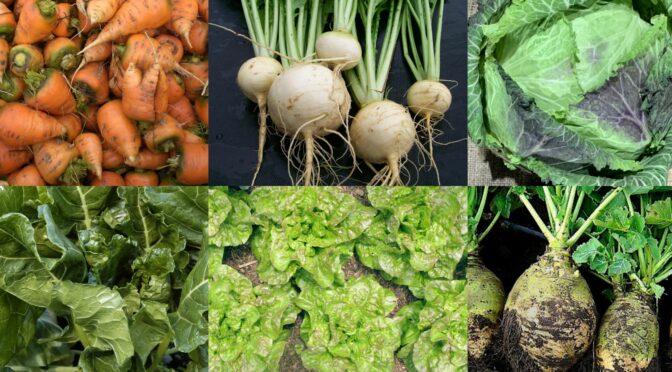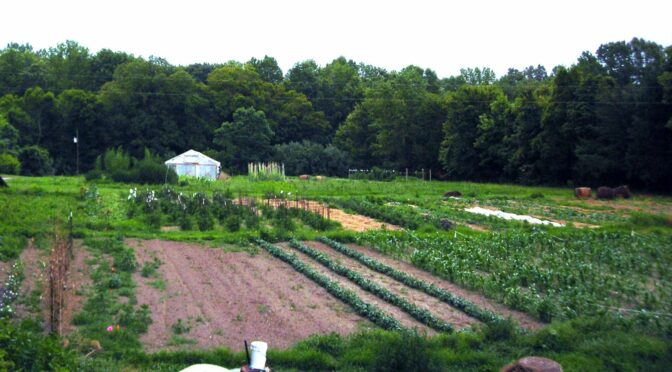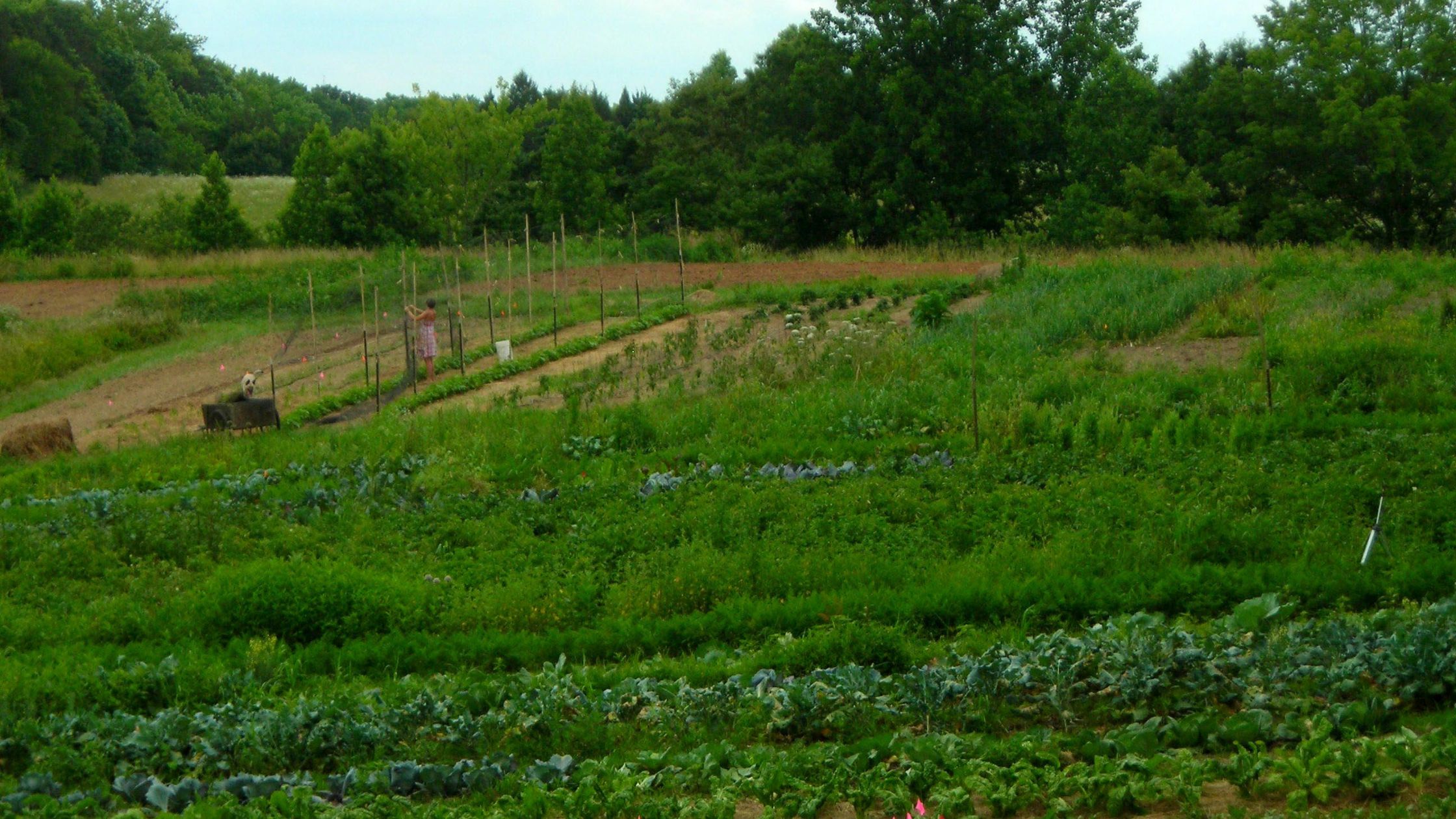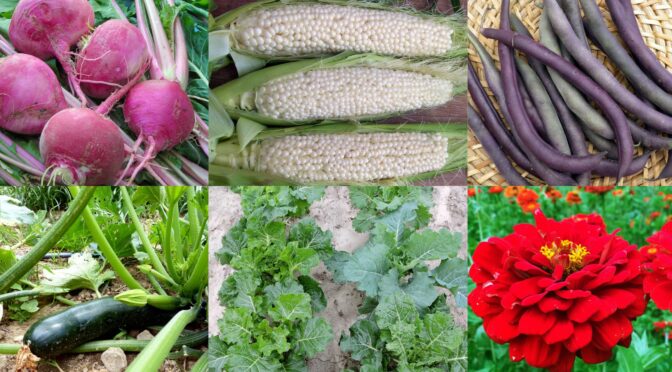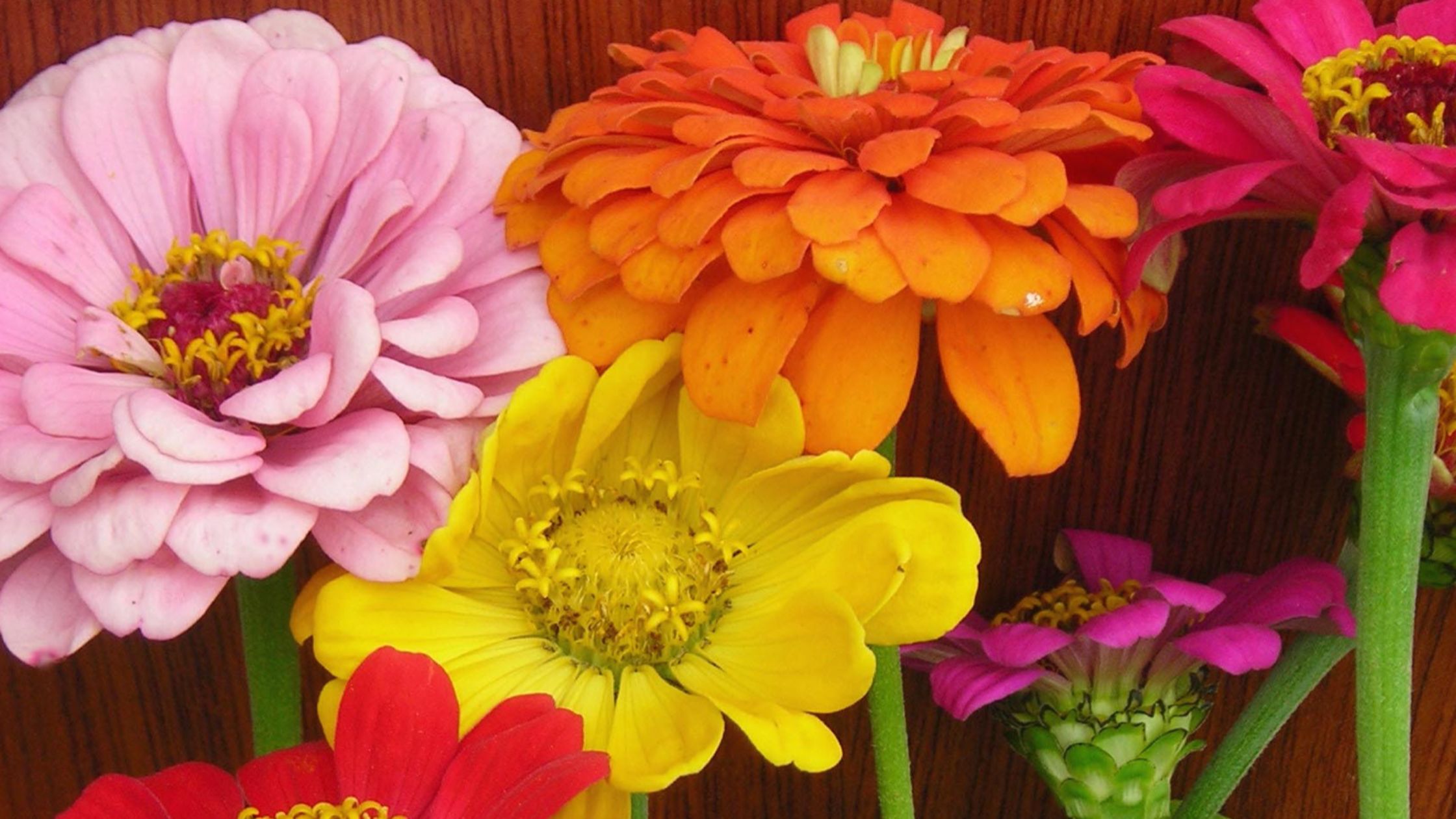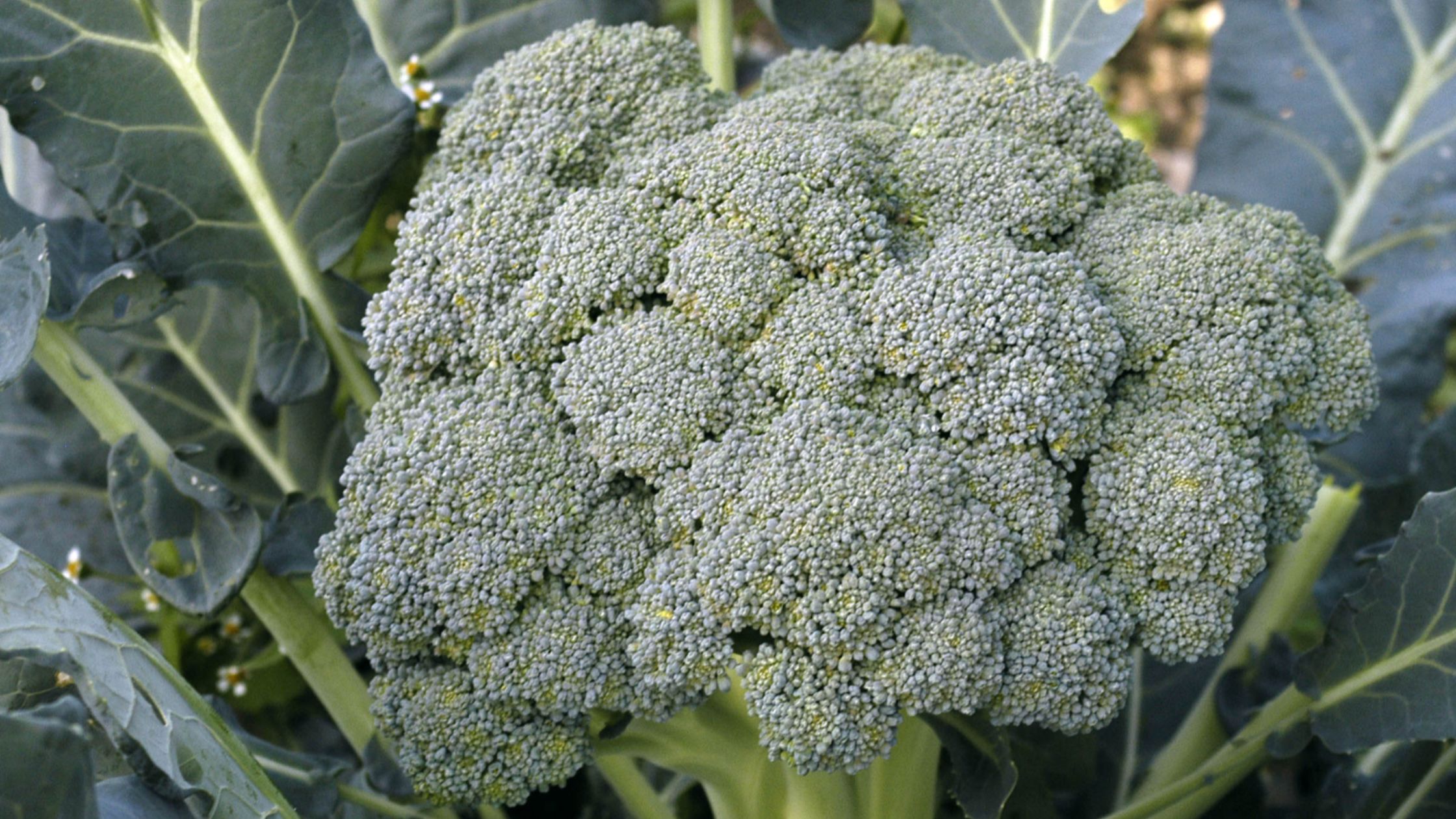It’s hard to believe it’s already July! If you’re hoping for fall and even early winter harvests from your garden, now is the time to start planning, prepping beds, and starting some seeds. While we love talking about heirloom tomatoes and other summer crops, today we’re sharing ten heirlooms that could make up the backbone of the fall garden.
January King Cabbage
This northern European heirloom dates back to 1897 and is probably one of the only crops you’ll be harvesting mid-winter. They’re slow-growing but super hardy, producing 3 to 5-pound heads in 110 to 160 days. We love their firm heads with light green inner leaves and beautiful semi-savoyed purple-tinged outer leaves. Plant them in early fall for a January or February harvest.
Amber Globe (Yellow Globe) Turnip
What’s a fall garden without a few turnips? These heirloom turnips date to 1840 and excel in the cool fall weather. They have sweet, creamy yellow, fine-grained flesh and are best harvested around 3 to 4-inch diameter though they will grow to a 6-inch diameter.
 Gigant Winter Kohlrabi
Gigant Winter Kohlrabi
Gigant is another heirloom that’s great for winter storage. It can even stay in the garden in warmer areas all winter, especially if you protect it with mulch. This variety is a Czechoslovakian heirloom that E. M. Meader reselected at UNH. It was introduced in 1989 by SESE and is resistant to root maggots.
This kohlrabi typically grows 8 to 10 inches in diameter but remains tender. It has grown to 62 pounds but is typically between 15 and 20 pounds. It’s delicious used fresh or cooked in any size, small to large. The leaves are also good and can be used like kale.
Lutz Green Leaf (Winter Keeper) Beet
Developed before the days of refrigerators, Lutz is a great choice for stocking the larder. These beets are excellent keepers and retain their sweetness and texture even when large (unlike most beets, which become woody when large). Just peel off the skin.
We also enjoyed the tender fall greens in salads. We’ve had problems finding good “true” seed for Lutz Green Leaf, but finally, this is the good stuff – thanks to the fine folks at Uprising Seeds for sharing theirs!
Nadmorska Rutabaga
This exciting variety is from seed collected in Lithuania in 2007 by the Seed Ambassadors Project. They’re large, vigorous, and early maturing. They produce green tops and long, oval-shaped roots with sweet golden flesh. They’re great for midsummer planting for a fall harvest.
Crawford Bibb (Butterhead) Lettuce
This tasty lettuce is a Texas favorite. It was originally brought to Texas from Oklahoma by the Crawford family. It’s famous for its great flavor, heat resistance, and fast growth. In Texas, it’s normally planted in fall and winter, but we’ve had luck with Crawford during the summer and winter here in Virginia. It’s a favorite of SESE founder Jeff McCormack.
Crawford produces Bibb-type heads with slightly savoyed leaves. It features some red/brown on the leaf edges.
Black Spanish Round Fall Radish
This 1846 heirloom is very hardy and an excellent winter keeper. One of my favorite fall radishes, it produces round roots that grow 3 to 4 inches or larger in diameter. The roots have thin black skin and white flesh that’s crisp and pungent.
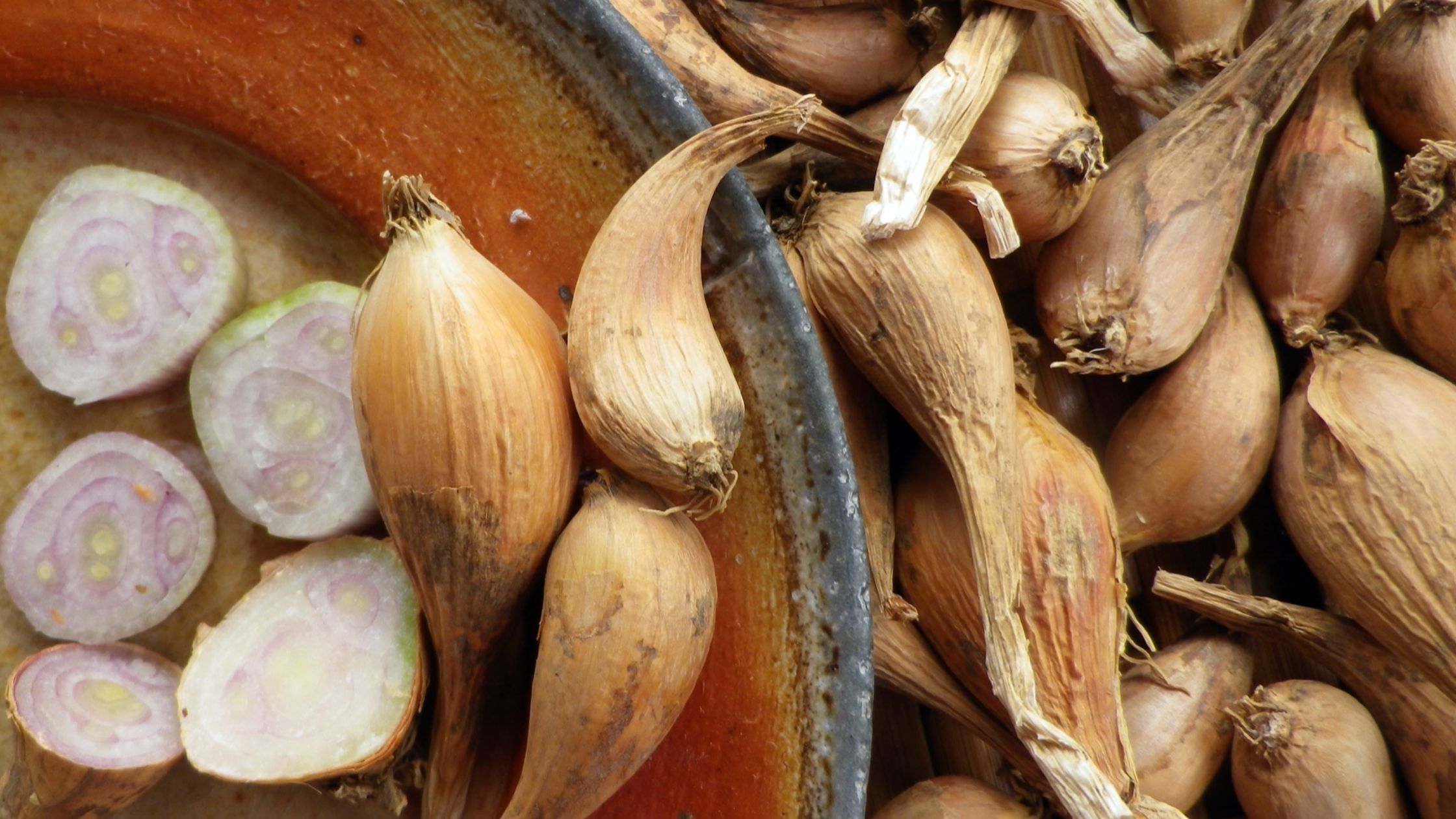 Grey Griselle Shallot
Grey Griselle Shallot
French gourmet chefs prize grey griselle. It produces these small, teardrop-shaped (1 x 1½ in.) bulbs with hard, grey skin and tender, pinkish-white flesh. They’re ready for harvest in 180 days.
Grey griselle has a distinctive, rich, earthy smell and mild, delicious flavor. Grey shallots are considered by many to be the only “true” shallots.
Buy seeds. Ships in the fall.
Green Glaze Collard
Introduced in 1820 by David Landreth, this unique collard variety produces smooth, bright green leaves. They grow 30 to 34 inches tall and have excellent resistance to cabbage looper and cabbage worm.
Green glaze is heat- and frost-resistant, slow-bolting, and non-heading. We recommend it, especially for southern and warm coastal states.
Oxheart Carrot
These unique-looking carrots date to 1884. They’re a great storage variety that produces thick, sweet “oxheart”-shaped carrots, 5-6 in. long and 3-4 in. wide, weighing up to a pound!
While they require more space than other carrot varieties, oxhearts are particularly suited to rocky or heavy clay soils. The shorter, broader roots tolerate shallow soils that most carrots won’t like.
When asked to name our favorite vegetables, many of us will name one of the quintessential veggies of summer. We’ll say summer squash, tomatoes, cucumbers, or sweet corn. The more we garden, the more apparent it becomes that all of these are best in their season. While we may be able to preserve some, it’s also nice to have other crops that are the flavors of fall and winter. These heirlooms provide their unique, homegrown flavors to all of our winter meals.

